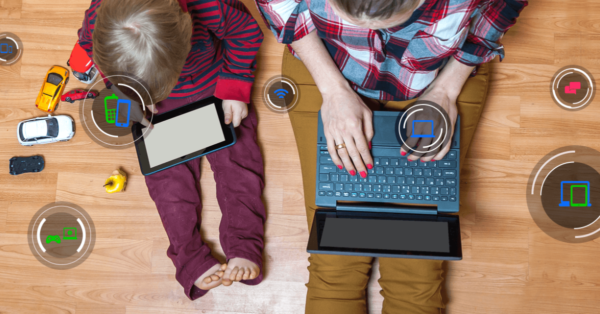Parents do everything they can to keep their children safe, from telling them not to accept gifts from strangers to cross the street carefully.
But, how do you intend to protect them against predators, and bullies on the internet?
The internet will stay here for many coming years, and with 95% of American kids (aged between 3-18) using the internet 3-5 times every day, you must take some precautions to ensure your child adopts safe browsing practices.
Even if they do something as simple as downloading a movie from piratebay you must know what movie they are downloading and if they are using VPN and antivirus or not. Hence, browsing your kids’ online browsing activity is mandatory.
But, Why???
- When children go to unsolicited sites on the internet, they are often harassed by cyberbullies and don’t tell their parents. However, if you monitor your kid’s browsing activity, you can step in when someone mistreats your child and save them.
- It’s a trend among teens to click nudes and send them to their partners or forward such pictures to others until they become viral on the internet. But unfortunately, they don’t realize that disclosing such personal information can hamper someone’s entire life.
- Some of your child’s online buddies may try to convince him to do drugs. If you monitor his browsing activity, you’ll know who these bad peers are and can advise your child to stay away from them.
How To Monitor Your Kid’s Online Browsing?
If you want to monitor your kid’s online browsing, you have to be cautious and make some rules. If you follow our tips, it may be a little easier. So, check these tips out:
1: Keep Devices Where You Can See Them
The No.1 rule is letting your kids browse the PC or laptop is always to keep an eye on your child’s online activity.
Place the computer at such a spot in the house so you can easily monitor what your child is watching online.
You can keep the Wi-Fi passcode secret so your children can’t surf online without your knowledge.
You might also try to agree that no tablets, computers, or gaming devices are allowed in bedrooms.
2: See Their Browsing History
If your child is younger, you might want to check their browser histories after being online to see what sites they’ve visited.
As youngsters learn to clear history, this technique becomes more complex, which is all the more reason to open the channels of discussion regarding internet use at a young age.
But, if you can’t keep the screen where you can see them, keeping tabs on their browsing history can be a good idea.
3: Know Their Online Friends
Children and teenagers can be alarmingly naive about who they are communicating with if they are not trained to be cyber-savvy from an early age.
Create a fake profile, and make friends with your child’s mutual friends so find out what he is posting, and what people are commenting on.
Don’t let your child know about this because he will definitely object, and will open a new profile to stay away from your supervision.
4: Keep Their Location Private
Geo-tagging is a feature found in most apps, networks, and gadgets that makes your location public and can bring someone to you. These functionalities should be disabled for obvious reasons of privacy and security.
Metadata in digital images may expose more than you want.
Some social media networks, but not all, automatically hide or remove this data, so do your research and be aware of how much information your child is posting online.
5: Keep Track Of Online Time
Children aged five to seventeen should spend no more than two hours every day in front of a screen.
Set a timer for 1 hour every day and get your kids to agree on a time limit – don’t forget to make this a non-negotiable end time.
You should also turn off the home Wi-Fi at a fixed period each night so that everyone has some fixed “internet time.”
6: Use Parental Control Apps
Kaspersky is a parental control app found on Windows, Mac, and mobiles that parents can use to restrict specific content and websites and regulate screen time and app usage. Here you can read about the best features of parental control apps.
When their children add new friends or post on Facebook, a report is sent to their parents.
The program also includes a GPS tracker and allows parents to set a secure zone where their children cannot leave without sending an alarm to their parents.
7: Work On Safety Patches
If you teach children all about cybersecurity as they study or spend time on the internet, you’ll ensure they browse safely.
You can remind them frequently that some websites might redirect to other websites without their knowledge. Hence, involve them in patch installation so that they understand the necessity of keeping systems up to date.
As a result, your youngster will learn to perform a network check on your home network and be safe online.
Signing Off
Teach your youngster to keep their digital footprint under control by teaching them all about online safety at a young age. Encourage them to use the privacy settings on social media platforms instead of sharing their posts with all their friends.
However, it’s critical to keep an eye on your child’s online activity to ensure they don’t establish unhealthy habits. So, if you need more information on these, ask us in the comment box.
